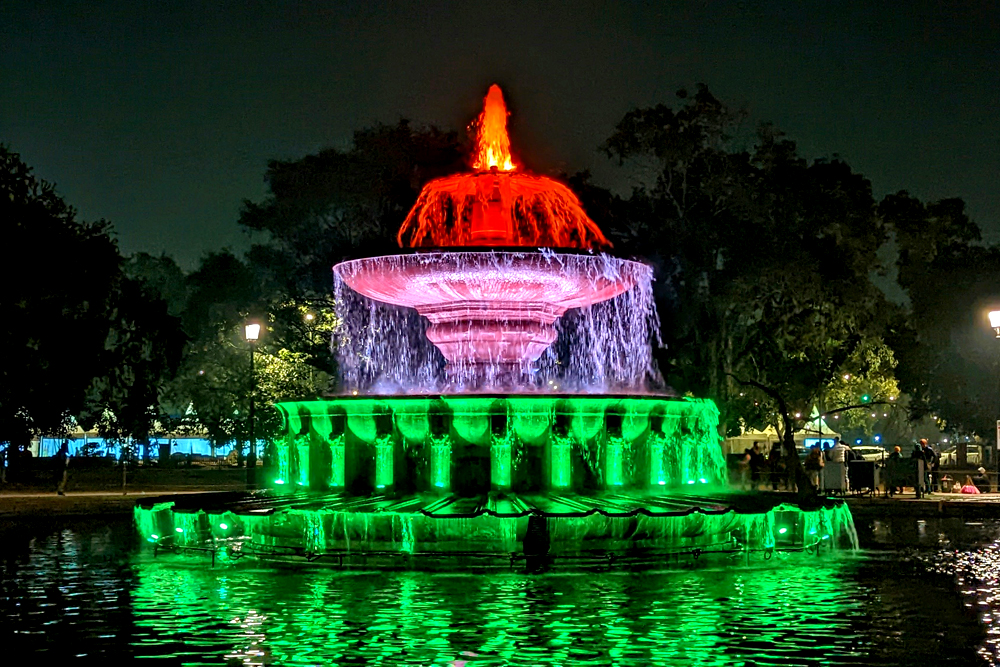India, a land woven with the threads of time, boasts a cultural and historical heritage as vibrant and diverse as the colors of its myriad festivals. From the snow-capped peaks of the Himalayas to the sun-kissed beaches of the Indian Ocean. Every corner of this vast subcontinent resonates with tales of bygone eras and civilizations. At the heart of India narrative lie its historical places, standing as silent witnesses to the ebbs and flows of centuries past.
The importance of these historical sites transcends mere architectural marvels; they serve as portals to India’s storied past. Each stone, each carving, whispers tales of conquests, dynasties, and cultural exchanges that have shaped the nation’s identity. They provide invaluable insights into the socio-political, religious, and artistic evolution of this ancient land.
As we embark on a journey through India historical places. We peel back the layers of time to uncover the essence of a civilization that has thrived for millennia. Join us as we traverse the length and breadth of this enchanting land. Unraveling the mysteries and marvels that lie within its historical tapestry.
Table of Contents
Ancient Marvels: Echoes of Empires Past
India’s ancient historical sites stand as testament to the ingenuity and grandeur of civilizations that flourished centuries ago. These architectural masterpieces not only captivate the eye but also narrate tales of dynasties, cultures, and artistic brilliance. Let us delve into the iconic ancient marvels that continue to enthrall visitors from across the globe.
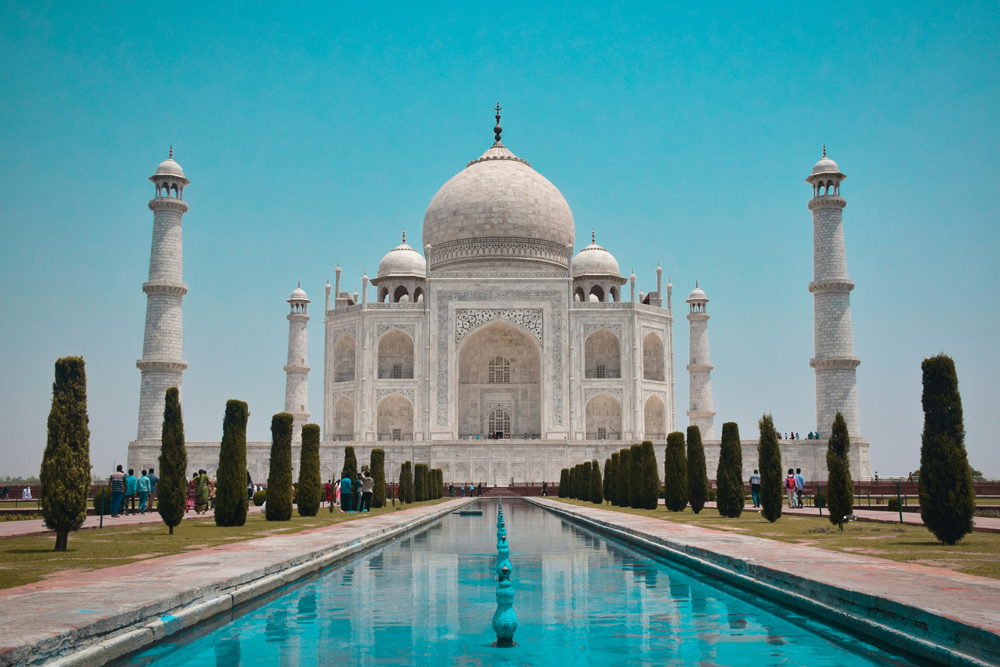
Taj Mahal, Agra:
Significance: Built by Mughal Emperor Shah Jahan in memory of his beloved wife Mumtaz Mahal. The Taj Mahal is a symbol of eternal love and one of the most recognizable monuments in the world.
Architectural Marvels: The intricate marble craftsmanship, symmetrical gardens, and the majestic dome are testaments to the Mughal architectural prowess. The play of light and shadow on the white marble facade at different times of the day adds to its ethereal beauty.
Qutub Minar, Delhi:
Significance: Standing tall in Delhi, the Qutub Minar is a UNESCO World Heritage Site and the tallest brick minaret in the world. The construction was undertaken by Qutb-ud-din Aibak, who established the Delhi Sultanate.
Architectural Marvels: The minaret is adorned with intricate carvings and verses from the Quran. The architectural style reflects a fusion of Islamic and Indian influences, showcasing the cultural syncretism of the era.
Ajanta and Ellora Caves, Maharashtra:
Significance: These UNESCO World Heritage Sites comprise a series of rock-cut caves that date back to the 2nd century BCE to the 6th century CE. They showcase Buddhist, Hindu, and Jain religious art and architecture.
Architectural Marvels: The caves are adorned with exquisite sculptures, paintings, and monolithic rock-cut structures. The Ajanta Caves, known for their stunning murals depicting the life of Buddha, are particularly renowned for their architectural and artistic excellence.
Hampi, Karnataka:
Significance: Hampi, once the capital of the Vijayanagara Empire, is a UNESCO World Heritage Site renowned for its rich architectural and cultural heritage.
Architectural Marvels: The ruins of Hampi include majestic temples, palaces, market streets, and gateways, reflecting the grandeur of the Vijayanagara Empire. The iconic Virupaksha Temple, Vittala Temple with its musical pillars, and the intricate stone chariot are among its architectural gems.
These ancient marvels not only showcase India’s rich heritage but also serve as a source of inspiration for architects, artists, and historians worldwide. As we stand in awe of these timeless monuments, we are reminded of the resilience and creativity of the civilizations that shaped the course of Indian history.
Forts and Palaces: Guardians of India’s Regal Legacy
India’s landscape is adorned with majestic forts and opulent palaces, each bearing witness to a bygone era of royalty and grandeur. These architectural marvels not only served as seats of power but also stood as symbols of the wealth and cultural richness of their respective regions. Let us embark on a journey through some of India’s most iconic forts and palaces, unraveling their historical importance and cultural significance.
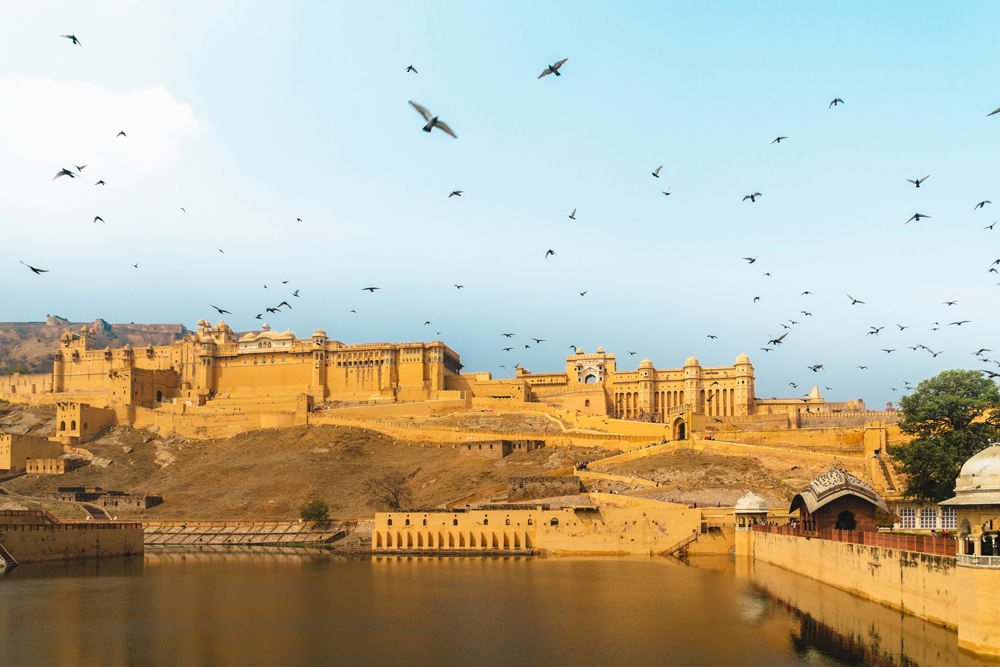
Amber Fort, Jaipur:
Historical Importance: Built in the 16th century by Raja Man Singh I, the Amber Fort served as the capital of the Kachwaha Rajput dynasty until Jaipur was established. It is renowned for its strategic location and stunning architecture.
Cultural Significance: The fort’s intricate marble and red sandstone facades, along with its ornate palaces, courtyards, and gardens, reflect a blend of Rajput and Mughal architectural styles. The Sheesh Mahal (Hall of Mirrors) and the Ganesh Pol (Gate) are among its notable features.
Mehrangarh Fort, Jodhpur:
Historical Importance: Perched atop a rocky hill overlooking the city of Jodhpur, Mehrangarh Fort was built by Rao Jodha in the 15th century. It served as the seat of the Rathore dynasty and played a pivotal role in defending the kingdom against invasions.
Cultural Significance: The imposing fortifications, intricate carvings, and expansive courtyards within Mehrangarh Fort epitomize Rajput military architecture. The fort houses a museum showcasing artifacts, weapons, and royal paraphernalia, offering insights into Rajputana’s martial heritage.
City Palace, Udaipur:
Historical Importance: The City Palace in Udaipur, overlooking Lake Pichola. It is a sprawling complex built over several centuries by various rulers of the Mewar dynasty. It served as the royal residence and administrative center.
Cultural Significance: The palace complex is a testament to the seamless fusion of Rajput, Mughal, European, and Chinese architectural influences, creating a distinctive and eclectic design. Its ornate gates, intricately carved balconies, mirrored chambers, and serene courtyards mesmerize visitors, offering a glimpse into Udaipur’s regal past.
Mysore Palace, Karnataka:
Historical Importance: Built-in the Indo-Saracenic architectural style in the late 19th century. Mysore Palace served as the residence of the Wodeyar dynasty, the erstwhile rulers of Mysore.
Cultural Significance: Adorned with intricate carvings, vibrant frescoes, and stained glass windows, Mysore Palace is a splendid example of architectural opulence. The palace’s grandeur is magnified during the annual Dasara festival when it is illuminated with thousands of lights, attracting tourists from far and wide.
These forts and palaces not only stand as architectural marvels but also embody the rich heritage and cultural legacy of India. As we wander through their corridors and courtyards, we are transported back in time. Experiencing the splendor and magnificence of India’s royal past.
Journey Through Sacred Realms: India’s Religious Sites
India, a land of diverse faiths and spiritual traditions, is adorned with a tapestry of religious sites that beckon pilgrims and seekers from around the world. From the sacred ghats of Varanasi to the serene halls of the Golden Temple. Each site holds a unique allure and significance in the hearts of devotees. Let us embark on a soul-stirring exploration of some of India’s most revered religious landmarks. Delving into the spiritual practices and rituals that define their sanctity.
Varanasi: The Oldest Living City in the World
Exploration: Discovering Varanasi, nestled along the revered banks of the Ganges River, unfolds the tale of an ancient city Celebrated as one of the world’s enduring cradles of civilization, where time seems to whisper secrets from antiquity. It is a melting pot of spirituality, where ancient rituals and traditions intertwine with the rhythm of daily life.
Insight: Devotees flock to Varanasi to perform sacred rituals such as bathing in the Ganges. Performing puja (ritual offerings) to the rising sun, and attending the mesmerizing Ganga Aarti (ritual worship of the river). The city’s numerous temples and ghats serve as focal points for spiritual communion and reflection.
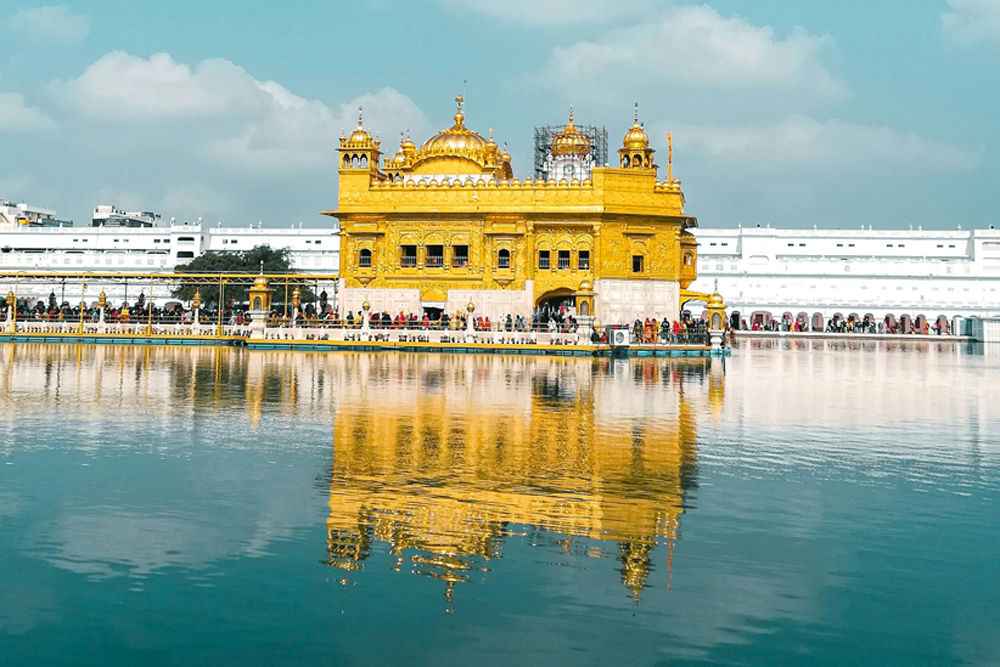
Golden Temple, Amritsar:
Exploration: The Golden Temple, or Sri Harmandir Sahib, is the holiest shrine in Sikhism and a symbol of universal brotherhood and equality. Its shimmering golden facade and serene surroundings exude an aura of divine tranquility.
Insight: Visitors to the Golden Temple partake in the timeless tradition of langar. A communal meal served to all regardless of caste, creed, or social status. The rhythmic recitation of Gurbani (Sikh scriptures) and the soothing kirtan (devotional music) resonate through the marble halls. Fostering an atmosphere of spiritual harmony.
Meenakshi Temple, Madurai:
Exploration: Meenakshi Temple, dedicated to Goddess Meenakshi (an incarnation of Goddess Parvati). It is a magnificent Dravidian masterpiece located in the ancient city of Madurai. Its towering gopurams (gateway towers) and intricate sculptures depict scenes from Hindu mythology.
Insight: Devotees throng to Meenakshi Temple to offer prayers, perform rituals, and seek the blessings of the divine mother. The temple’s vibrant festivals, such as Meenakshi Thirukalyanam (celebration of the divine marriage), immerse visitors in a kaleidoscope of color, music, and devotion.
Konark Sun Temple, Odisha:
Exploration: The Konark Sun Temple, a UNESCO World Heritage Site, is a marvel of ancient architecture dedicated to the Sun God Surya. Its intricate stone carvings and monumental chariot-shaped design evoke awe and reverence.
Insight: Pilgrims and visitors gather at the Konark Sun Temple to pay homage to the divine sun god and witness. The magical spectacle of the sunrise or sunset. The temple’s annual Chandrabhaga Mela attracts devotees who take a ritual dip in the Chandrabhaga River to cleanse their sins and seek blessings.
These sacred sites serve as beacons of spirituality and repositories of cultural heritage. Offering seekers solace, inspiration, and a deeper connection to the divine. As we traverse their hallowed grounds. We are reminded of the timeless quest for transcendence that unites humanity across diverse faiths and traditions.
Preserving India’s Treasures: UNESCO World Heritage Sites
India’s rich cultural and historical heritage finds recognition and protection through the UNESCO World Heritage designation. Highlighting the global significance of these iconic landmarks. Let us delve into the UNESCO-recognized historical sites in India and explore the importance of their preservation efforts.

Red Fort, Delhi:
Overview: The Red Fort, a masterpiece of Mughal architecture, served as the main residence of the Mughal emperors for nearly 200 years. Within its commanding embrace of crimson sandstone. Lies a labyrinthine world of palatial splendor, curated galleries, and verdant gardens, offering a sanctuary of heritage and tranquility.
Significance: Recognized for its architectural grandeur and historical importance. The Red Fort symbolizes the zenith of Mughal power and the cultural synthesis of India’s diverse heritage. Its UNESCO status underscores the need for its preservation as a tangible link to India’s past.
Khajuraho Group of Monuments:
Overview: The Khajuraho Group of Monuments comprises a stunning array of Hindu and Jain temples adorned with intricately carved sculptures depicting various aspects of life, spirituality, and erotica. These temples date back to the Chandela dynasty in the 10th to 12th centuries.
Significance: The Khajuraho temples are renowned for their exquisite craftsmanship and architectural splendor. Representing a pinnacle of medieval Indian art and culture. UNESCO recognition elevates their importance as a global cultural treasure, fostering awareness and conservation efforts.
Mahabodhi Temple Complex, Bodh Gaya:
Overview: The Mahabodhi Temple Complex in Bodh Gaya is revered as the place where Lord Buddha attained enlightenment under the Bodhi tree. The temple, built in the 3rd century BCE, is a sacred pilgrimage site for Buddhists worldwide.
Significance: As the birthplace of Buddhism, the Mahabodhi Temple Complex holds immense spiritual and historical significance. Its UNESCO designation acknowledges its universal value as a site of profound religious and cultural significance, warranting protection and conservation.
Western Ghats:
Overview: The Western Ghats, also known as the Sahyadri mountain range, are a UNESCO World Heritage Site recognized for their exceptional biodiversity and ecological importance. Stretching over 1,600 kilometers along the western coast of India. They are home to diverse ecosystems, endemic species, and vital watersheds.
Significance: The Western Ghats are a biodiversity hotspot of global significance. Supporting millions of people and myriad plant and animal species. UNESCO recognition highlights the need for sustainable management and conservation efforts to safeguard this critical ecosystem for future generations.
UNESCO World Heritage status not only honors India’s cultural and natural treasures. But also underscores the collective responsibility to protect and preserve them for posterity. Through concerted efforts in conservation, management, and awareness-raising. These iconic sites serve as enduring symbols of India’s rich heritage and legacy.
Unveiling India’s Hidden Treasures: Off-the-Beaten-Path Historical Sites
While India’s iconic landmarks draw millions of visitors each year. The country is also home to lesser-known gems that offer a glimpse into its rich and diverse history. These off-the-beaten-path destinations, often tucked away in remote corners, hold untold stories of valor, architectural splendor, and cultural heritage. Let us embark on a journey to discover some of India’s hidden historical treasures and explore the importance of venturing off the well-trodden path.
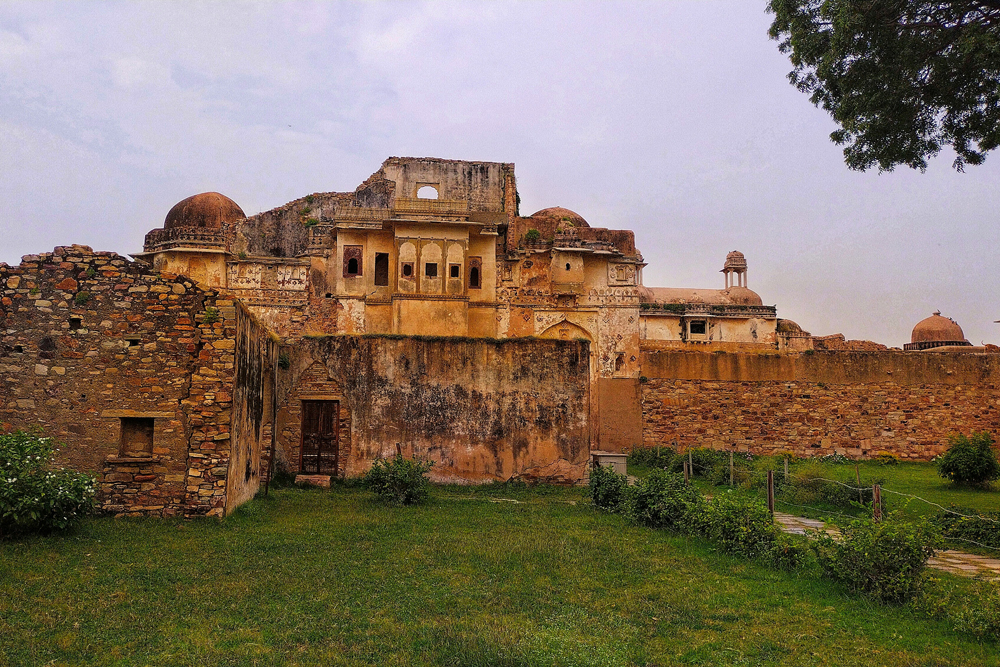
Rani ki Vav, Gujarat:
Discussion: Rani ki Vav, located in Patan, Gujarat, is a stepwell dating back to the 11th century. This UNESCO World Heritage Site is an architectural marvel adorned with intricate carvings depicting mythological themes, deities, and scenes from everyday life.
Importance: Rani ki Vav represents a significant cultural and engineering achievement of ancient India. Its underground labyrinthine structure served as a gathering place, water source, and refuge during hot summers. Discovering such hidden gems sheds light on lesser-known facets of India’s heritage and craftsmanship.
Belur and Halebid Temples, Karnataka:
Discussion: Belur and Halebid, located in Karnataka, are home to a stunning array of Hoysala temples renowned for their intricate carvings and architectural brilliance. The Chennakesava Temple in Belur and the Hoysaleswara Temple in Halebid are exemplary specimens of medieval Indian temple architecture.
Importance: Exploring these hidden temples unveils the artistic prowess and religious fervor of the Hoysala dynasty. Their exquisite sculptures and ornate details showcase a blend of Dravidian and Nagara architectural styles. Offering insights into India’s cultural heritage beyond the well-known sites.
Chittorgarh Fort, Rajasthan:
Discussion: Chittorgarh Fort, situated atop a hill in Rajasthan, is one of the largest forts in India and a UNESCO World Heritage Site. Its sprawling complex houses palaces, temples, and reservoirs, narrating tales of valor, sacrifice, and resilience.
Importance: Visiting Chittorgarh Fort provides a glimpse into Rajasthan’s tumultuous history and the legendary tales of Rajput chivalry. Exploring its hidden corners and lesser-known structures allows visitors to connect with the fort’s rich past and understand its strategic significance in shaping India’s history.
Ranthambore Fort, Rajasthan:
Discussion: Ranthambore Fort, nestled within the Ranthambore National Park, is a formidable fortress dating back to the 10th century. This hidden gem offers panoramic views of the surrounding wilderness and houses ancient temples, palaces, and reservoirs.
Importance: Discovering Ranthambore Fort not only offers a glimpse into Rajasthan’s architectural heritage. But also provides an opportunity to appreciate the symbiotic relationship between history and nature. Its location within a wildlife sanctuary adds to its allure, showcasing the coexistence of man and wildlife over centuries.
Importance of Discovering Off-the-Beaten-Path Destinations:
Venturing off the beaten path to explore hidden historical sites enriches our understanding of India’s diverse heritage and fosters a deeper connection with its cultural tapestry. These lesser-known gems offer opportunities for cultural exchange, preservation, and sustainable tourism development. Moreover, they encourage exploration beyond the tourist hotspots, promoting a more holistic and authentic travel experience. By uncovering these hidden treasures, we not only preserve India’s heritage. But also contribute to the conservation and promotion of its lesser-explored historical legacies.
Navigating the Impact of Tourism on Historical Places
Tourism serves as a double-edged sword for historical places, bringing both benefits and challenges to these revered sites. As throngs of visitors flock to explore the rich tapestry of India’s heritage. It is essential to recognize and address the diverse impacts that tourism can have on these historical treasures.
Positive Impacts:
Economic Boost: Tourism injects vital revenue into local economies, supporting livelihoods and fostering economic growth. Income generated from visitor spending contributes to the maintenance and preservation of historical sites.
Cultural Exchange: Tourism facilitates cultural exchange and dialogue, fostering mutual understanding and appreciation among visitors and local communities. Interactions between tourists and residents can promote cross-cultural learning and awareness.
Preservation Incentives: Increased tourist footfall often incentivizes authorities to invest in the preservation and restoration of historical sites. Funds generated from entrance fees and tourism-related activities are channeled into conservation efforts.
Negative Impacts:
Overcrowding and Degradation: Excessive tourist numbers can lead to overcrowding. Causing wear and tear on historical structures, monuments, and natural landscapes. Foot traffic, pollution, and improper waste disposal can degrade the integrity of these sites.
Cultural Erosion: Unregulated tourism can result in the commodification and commercialization of cultural heritage. Leading to the dilution of authentic traditions and practices. Commercial exploitation may prioritize profit over cultural integrity.
Environmental Damage: Uncontrolled tourism activities. Such as deforestation, habitat destruction, and pollution, can have detrimental effects on the surrounding environment, jeopardizing ecosystems and biodiversity.
You may like to know about the PLACES TO VISIT IN KOLKATA, INDIA
Importance of Responsible Tourism and Preservation Efforts:
Sustainable Development: Responsible tourism practices aim to minimize negative impacts while maximizing the benefits of tourism. Sustainable development strategies prioritize environmental conservation, community engagement, and cultural preservation.
Visitor Education: Promoting awareness and education among tourists about the significance of historical sites encourages respectful behavior and responsible travel practices. Visitors can play a proactive role in minimizing their ecological footprint and respecting local customs and traditions.
Stakeholder Collaboration: Effective preservation efforts require collaboration between government authorities, local communities, heritage organizations, and tourism stakeholders. Engaging all stakeholders in decision-making processes ensures inclusive and sustainable management of historical sites.
Regulatory Measures: Implementing regulatory measures, such as visitor quotas, entry fees, and zoning restrictions, can help manage tourist influx and mitigate overcrowding at historical sites. Enforcement of guidelines and codes of conduct ensures the protection of cultural and natural heritage.
Conclusion
India’s historical heritage is a testament to the richness and diversity of its cultural tapestry, woven with threads of ancient civilizations, dynasties, and traditions. From the towering forts of Rajasthan to the serene temples of Tamil Nadu. Every corner of this enchanting land resonates with tales of bygone eras and architectural marvels.
As we reflect on India’s vast historical legacy. We are reminded of the importance of exploring and appreciating the myriad treasures that dot its landscape. Each historical site tells a unique story. Offering insights into the complex tapestry of India’s past, its cultural exchanges, and artistic achievements.
Let us heed the call to embark on a journey of discovery. To wander through the hallowed halls of forts, temples, and palaces, and to immerse ourselves in the rich history and heritage that define India. By delving into the depths of India’s historical treasures. We gain not only a deeper understanding of its past but also a profound appreciation for its enduring legacy.
However, with the privilege of exploration comes the responsibility of preservation. We must cherish and protect these invaluable treasures for future generations. Through responsible tourism practices, sustainable development initiatives, and collaborative conservation efforts. We can ensure that India’s historical sites continue to inspire and captivate the hearts of visitors from around the world.
Together, let us pledge to be stewards of India’s historical heritage, safeguarding its splendor and significance for generations to come. As we tread lightly on the paths of the past, may we leave behind a legacy of respect, admiration, and reverence for India’s timeless treasures.
